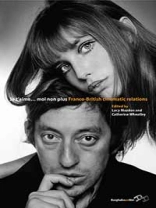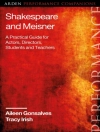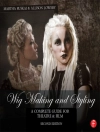A series of limiting definitions have tended to delineate the Franco-British cinematic relationship. As this collection of essays reveals, there is much more to it than simple oppositions between British critical esteem for the films of France and French dismissal of ‘le cinéma British’, or the success of Ken Loach et al. at the French box office and the relative dearth of French movies on British screens. In fact, there has long been a rich and productive dialogue between these two cultures in which both their clear differences and their shared concerns have played a vital role. This book provides an overview of the history of these relations from the early days of sound cinema to the present day. The chapters, written by leading experts in the history of French, British and European cinema, provide insights into relations between French and British cinematic cultures at the level of production, exhibition and distribution, reception, representation and personnel. The book features a diverse range of studies, including: the exhibition of French cinema in Britain in the 1930s, contemporary ‘extreme’ French cinema, stars such as Annabella, David Niven and Jane Birkin and the French Resistance on British screens.
İçerik tablosu
List of Illustrations
List of Tables
Acknowledgements
Introduction
Chapter 1. Franco-British Cinematic Relations: An Overview
Lucy Mazdon
Part I: Industry and Institutions
Chapter 2. The Exhibition, Distribution and Reception of French Films in Britain in the 1930s
Vincent Porter
Chapter 3. The ‘Cinematization’ of Sound Cinema in Britain and the Dubbing into French of Hitchcock’s Waltzes from Vienna (1934)
Charles O’Brien
Chapter 4. Une Entente Cordiale? A Brief History of the Anglo-French Film Coproduction Agreement, 1965–1979
Justin Smith
Chapter 5. Channel-crossing Festivals: The Cases of the French Film Festival U.K. and Dinard’s Festival du Film Britannique
Cécile Renaud
Chapter 6. The Language of Love? How the French Sold Lady Chatterley’s Lover (Back) to British Audiences
Catherine Wheatley
Part II: Reception and Perceptions
Chapter 7. Disciplining the Nouvelle Vague: Censoring A Bout de Souffle and Other Early French New Wave Films (1956–1962)
Daniel Biltereyst
Chapter 8. The Reception of the Nouvelle Vague in Britain
Geoffrey Nowell-Smith
Chapter 9. ‘New Waves, New Publics?’: The Nouvelle Vague, French Stars and British Cinema
Sarah Street
Chapter 10. Mirror Image: French Reflections of British Cinema
Ian Christie
Chapter 11. ‘Incredibly French’?: Nation as an Interpretative Context for Extreme Cinema
Melanie Selfe
Chapter 12. British Audiences and 1990s French New Realism: La Vie Rêvée des Anges as Cinematic Slum Realism
Ingrid Stigsdotter
Part III: Personnel and Performance
Chapter 13. ‘The Meaning of That French Word Chic’: Annabella’s Franco-British Stardom
Jonathan Driskell
Chapter 14. ‘Those Frenchies Seek Him Everywhere’: David Niven in Franco-British Cinematic Relations
Cristina Johnston
Chapter 15. Truffaut in London
Robert Murphy
Chapter 16. Jane Birkin: From English Rose to French Icon
Leila Wimmer
Chapter 17. The French Resistance Through British Eyes – From ’Allo ’Allo! to Charlotte Gray
Ginette Vincendeau
Chapter 18. ‘In the Ghetto’: Space, Race and Marginalization in French and British ‘Urban’ Films La Haine and Bullet Boy
Jim Morrissey
Notes on Contributors
References
Index
Yazar hakkında
Catherine Wheatley is a Research Assistant at the University of Southampton where she is working on Lucy Mazdon’s AHRC funded project on French cinema in Britain. She is the author of Michael Haneke’s Cinema: The Ethic of the Image (Berghahn Books, 2009) and is a regular contributor to Sight and Sound.












